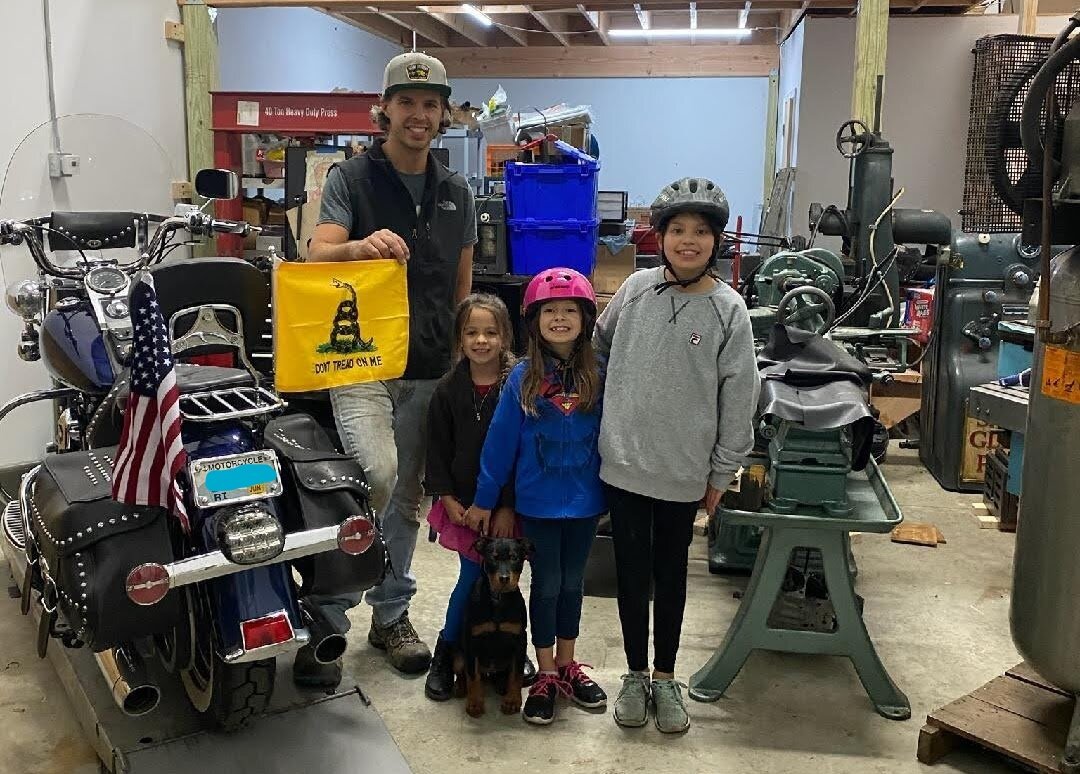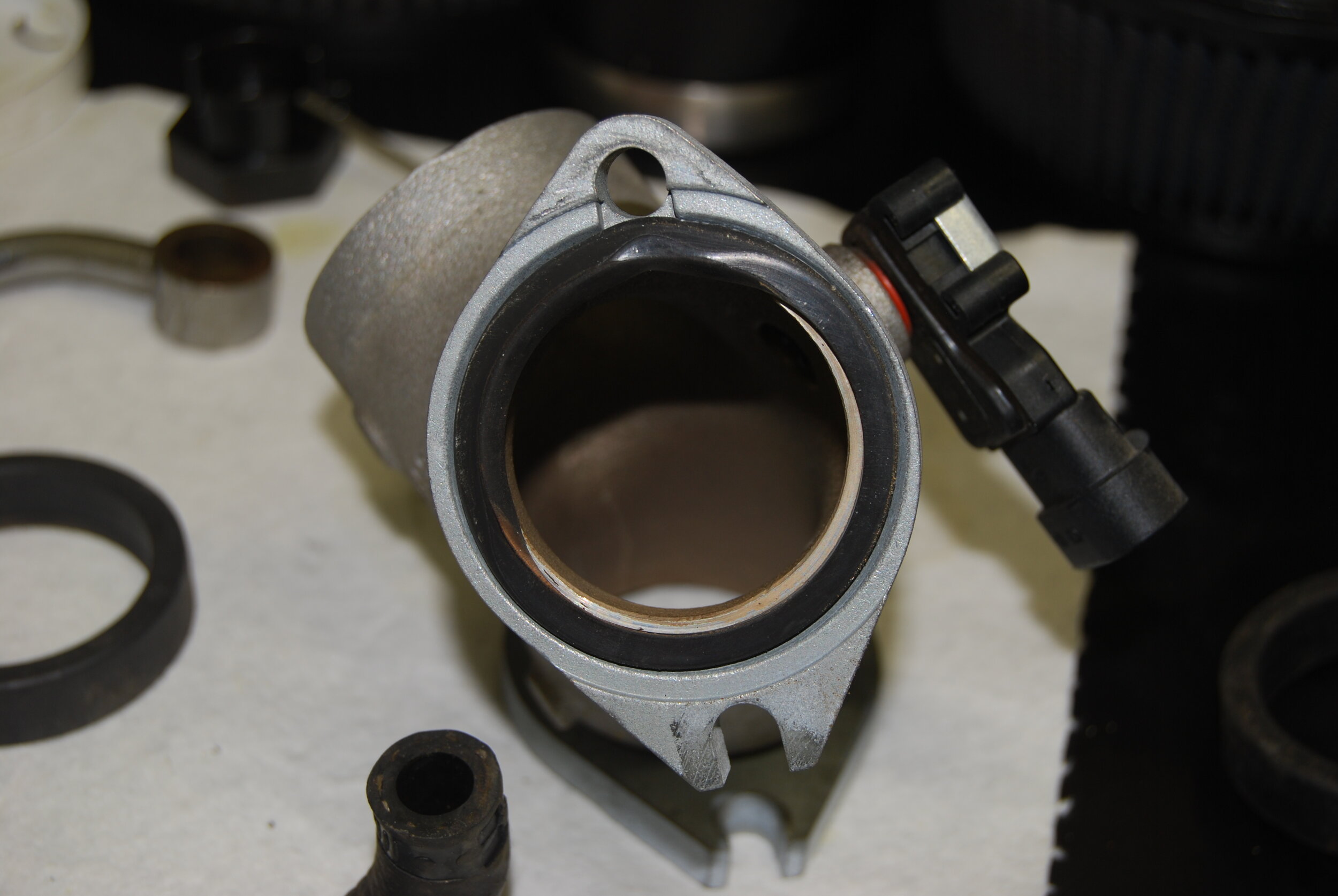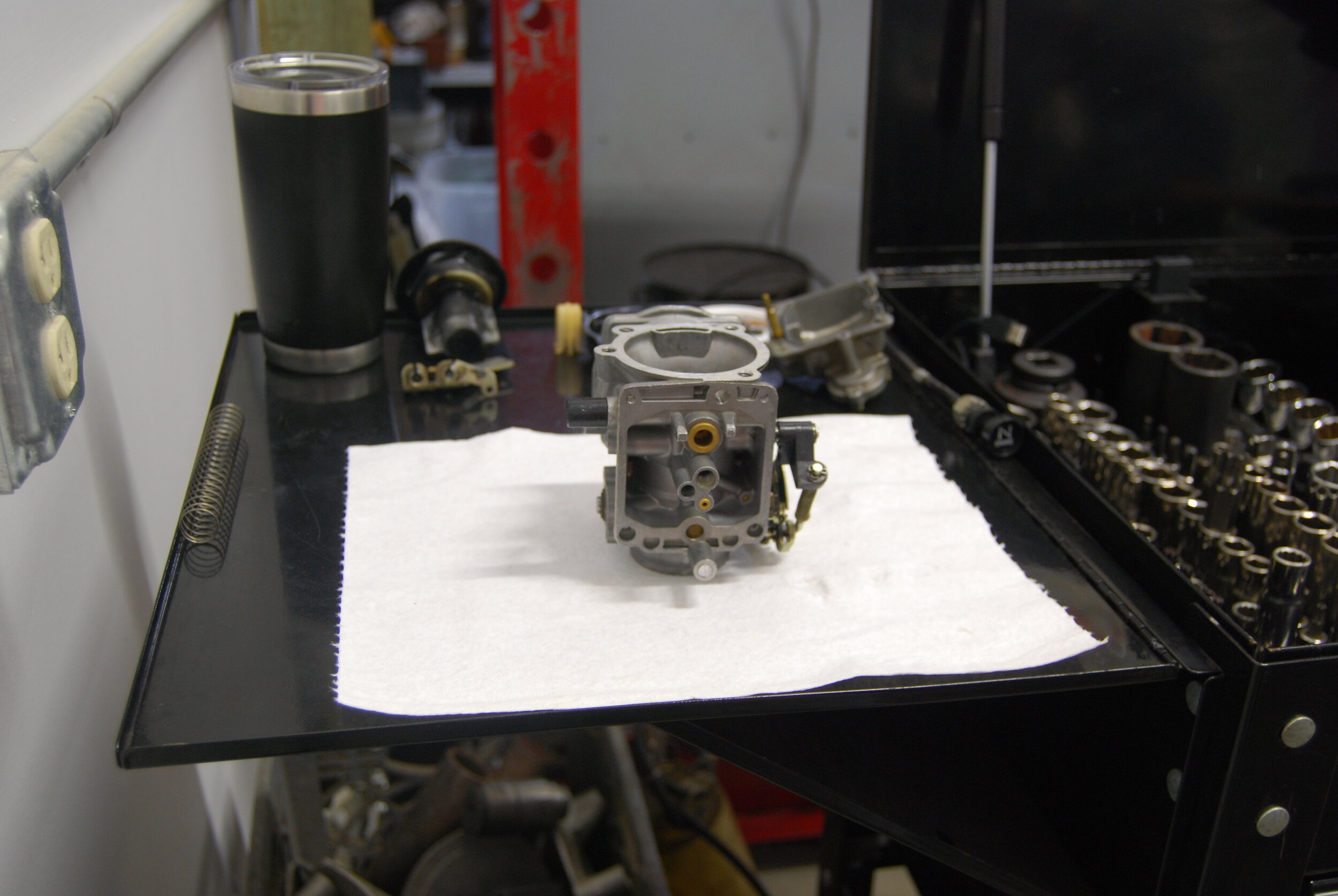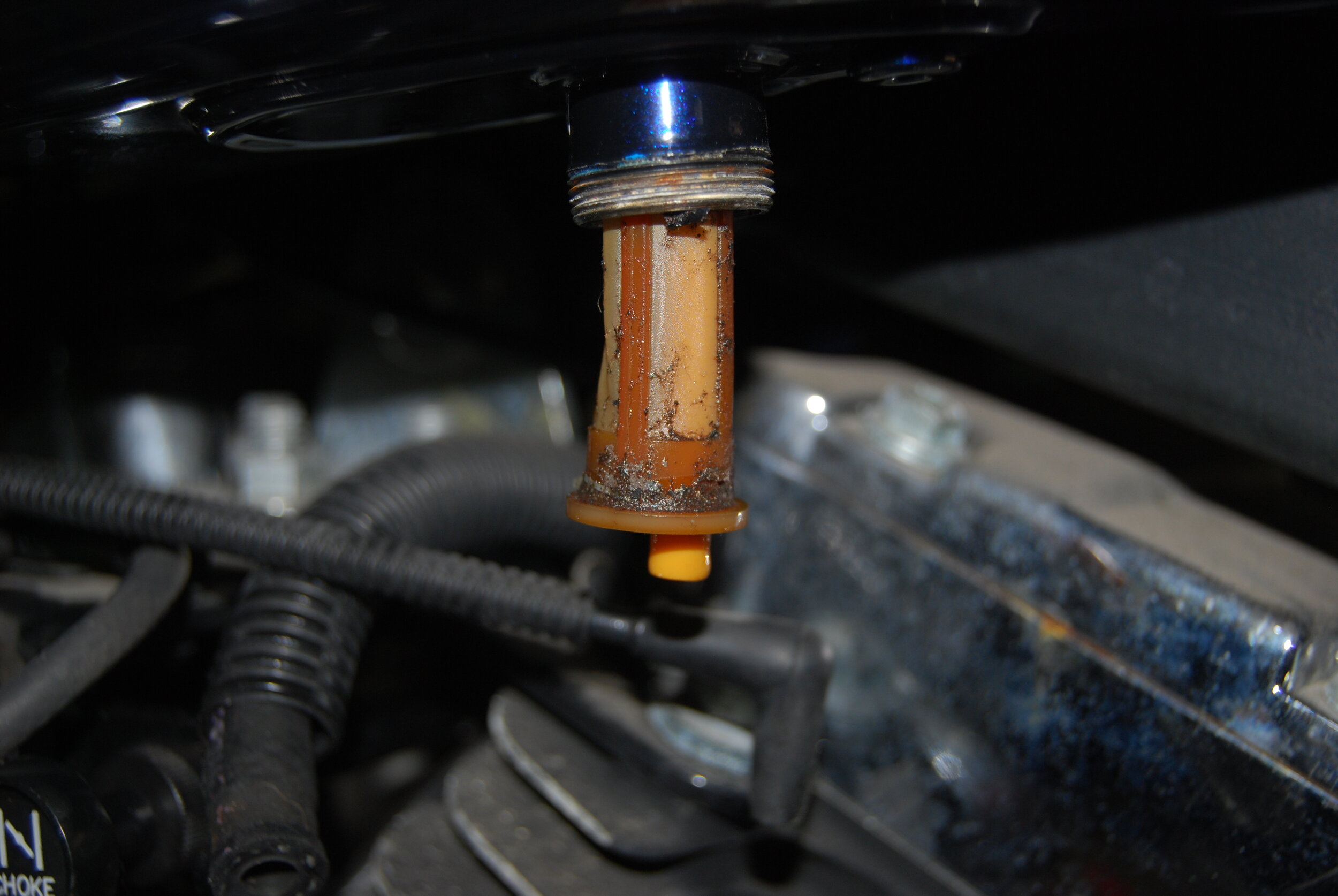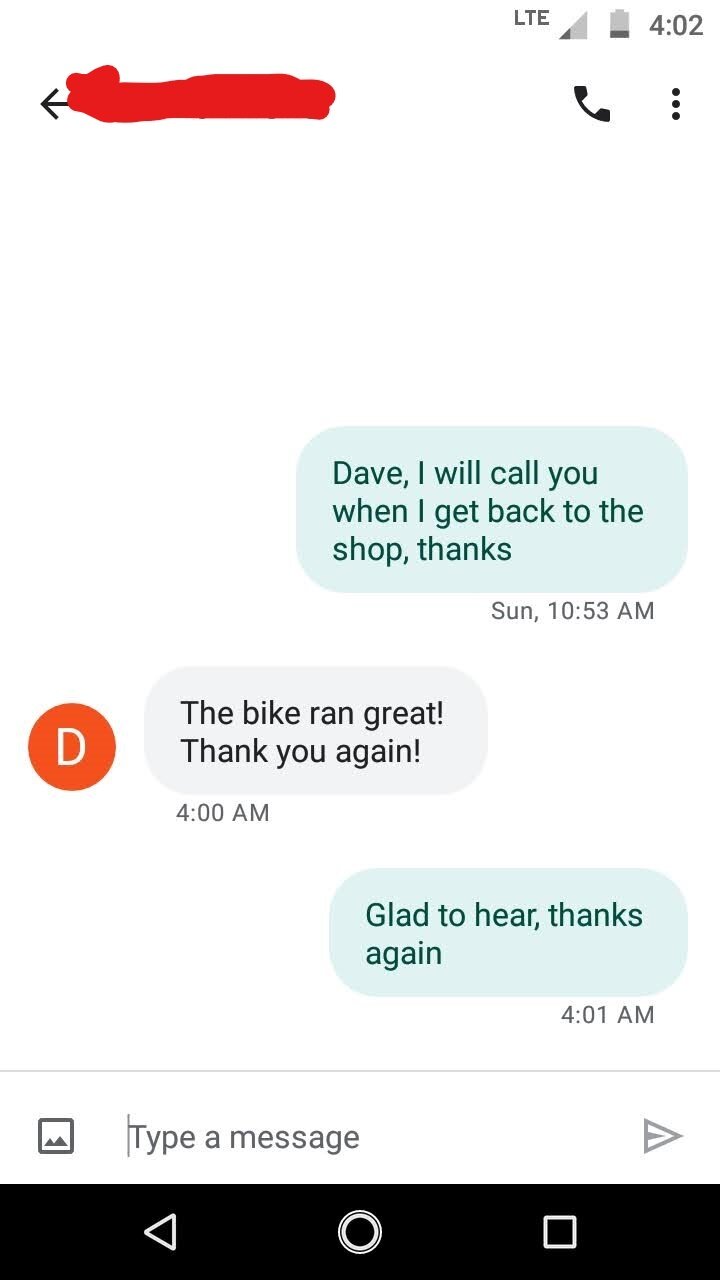#0001 - It Only Runs on Choke…
0001 – It only runs on choke…
In early September, when I announced that I was opening Johnson Engine Technology back up, I had requests for service appointments within a few hours. Dave has been a customer for years, and it was a pleasure to work on his bike. The bike came with carburation issues and it would only run-on choke. This led me to believe it either had clogged jets or and intake manifold leak….
The first thing that I did was to look at the fuel in the tank, it was green and smelled like paint thinner. Old ethanol laced fuel is the killer of carburetors. After pulling off the carb I checked out the manifold to cylinder head seals. The front seal had swollen up and fell into the port and here was the main source of the running issues. The old trick is to spray the intake manifold down with a combustible solvent while the bike is running, to check for air leaks. If the idle rises while spraying fluid at the seals, you have a leak at the seals. I skipped this step because the gas was so stale and had most likely clogged the carb jets. When I inspected the carb, the idle jet was clogged, the accelerator pump diaphragm was delaminating, and its rubber was floating around in the fuel bowl.
After cleaning the carb up and replacing the intake manifold seals and gas, I took the bike out for a test ride. After the engine warmed up and I fully took it off choke it would pop back through the carb every minute or so either at idle or low throttle opening. I adjusted the idle mixture screw to richen it up at low RPMs, but it kept on popping back through the carb. When I had finished up my test ride, I noticed that the carb was pouring fuel out and the float was stuck open. I pulled the carb off and cleaned up the float needle and seat, which resulted in finding lots of rust in the carb bowl. I put the carb back on and fired the bike back up when I then noticed drops of fluid on the ground on the primary side of the bike. Now the fuel petcock was leaking fuel all over the primary and the ground. I did not have a petcock rebuild kit on the shelf and the dealership wanted ninety-three dollars for a rebuild kit, so Dave decided to go with a Pingel unit, which is much better than the OEM part and easily rebuildable. With the new Pingel fuel valve, I went up on the low-speed jet to richen the bike up at idle and low RPMs, and it ran great.
Working on carbureted bikes that have sat for any period with old fuel, can be a challenge and you can’t take anything for granted. Ethanol fuels naturally collect water and the water accumulates at the lowest points in the fuel system, which is the bottom of the fuel tank and the carburetor bowl. When the water collects at the bottom of the tank and then sits there, rust starts to grow immediately. The rust then works it’s way into the carb, attacking the float needle first, and then the jets. My recommendation for carbureted bikes it to always put them away with fuel without ethanol. You can find ethanol free fuel at all power equipment stores and many stores sell VP Racing fuel. My recommendation would be to buy five gallons towards the end of the riding season, run your bike empty, and then add your ethanol free fuel. Make sure you put some more miles on your bike to get the ethanol fuel out of the carb bowl. Following these steps should ensure that your bike is ready to ride come the start of your riding season.

